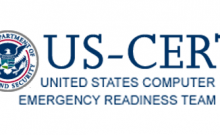Today I share with you a piece I wrote in the beginning of November as a guest blog for Cammie Moises and her MomsMaterial blog. The content I believe is apropos for your families and friends who may be online. (You may use/share any of the online safety tips in your own material – please attribute appropriately.)
———————-
How was your October? For me, October was a spectacular month of change. In the Pacific Northwest where my wife and I reside, we witness the arrival of autumn and the usual adjustments to our life – temperatures slide down the Fahrenheit scale; rain arrives and rivers swell (some flood); and leaves begin their magnificent colorful transformation, literally right before our eyes, and then adorn our forest floors (or our yard). These changes require us to make minor adjustments to our daily routines in order to maintain a modicum of safety, health and comfort, i.e. our tanks and tee’s are replaced by sweaters; slickers and umbrellas adorned the hooks by the door, drains and gutters are cleared to more readily accept the rain and the areas of highest risk are protected with stacked sandbags; and, of course, the camera comes out to memorialize the leaves as they move through the spectrum of color and the rake comes out of the shed our lawns remain healthy. October also reminded us that we must continually update and change the way we remain healthy and safe online.
In his video the President touched on a number of key points:
- Know with whom you are engaged online (the true identity with whom you are exchanging data)
- Never give out personal or financial data without knowing with whom you are providing the information (the true identity)
- Keep your security software updated
- Be alert to Phishing email (suspicious email)
- Passwords: Practice good cyber-hygiene – Passwords are like toothbrushes – you should not share them with others and you should change them often (every 90-120 days or when they are exposed).
- Passwords: Like chewing bubble gum you don’t mix brands or flavors – passwords should follow the same philosophy and be used for one site only. To create a strong password use symbols, numbers and letters – never a word from a dictionary (of any language).
- WI-FI: Home or Business wireless networks (WI-FI) – Enable WPA2 encryption with strong passwords. If your router does not support WPA2 encryption, time to upgrade that router to new technology.
- WI-FI: Configure your router to suppress the broadcast of your Service Set Identifier (SSID) – why broadcast to the neighborhood your router’s ID?
- Guidance & Direction: Guide your young. The internet is to receive information only and not to be used to share information. Only Mom & Dad share information over the internet.
- Browser Settings: Web-based email (e.g. Gmail, Hotmail, etc.) configure your browser log-in to HTTPS (S=secure) and avoid having your password sniffed and grabbed when connecting via an open (not secure) network connection. Think of the wireless connection at your local shopping center or coffee shop.
- Software Settings: Does your family use Peer-to-Peer (P2P) file sharing? Know your settings. A great technology, appropriately configured, use these thoughts from the Federal Trade Commission to assist you (Tips from the FTC’s OnGuard OnLine)
- Computer Settings: Disable Auto-Run – just like putting your safety-belt on when you take your seat in the car, take a primary safety step and anti-virus scan all media being introduced to your PC, even if you received it from a trusted source, their USB/CD/DVD may be ill and contain malware/crimeware and why allow it to infect yours?
- Software Settings: Software vendors offer you the option to accept auto updates – DO IT. While it may be construed as inconvenient, realize these updates from the creator are their means by which they close previously unknown vulnerabilities in their products.
- Email: Phishing Scams – Guide your family to not reply or click on links within emails asking for personal or financial information.
- Computer Settings: Administrator control? Who has control of your computer? Take control, set a unique password so that the computer settings can only be changed by the administrator, you?
- Anti-Virus Software: Have it and use it! Auto update both the engine and the data. Don’t ignore warnings. Train your family to call out and alert you when a warning presents itself – don’t ignore these warnings.
- Anti-Spyware Software: Have it and use it! As with Anti-Virus don’t ignore the warnings – Spyware is designed to capture your data at the point of entry or harvest your data from your hard drive – why allow it?
- Data Backup: Regular data backup(s) should be a part of your security regime. I define data as photos, videos, music, documents, etc. Why? If your device (laptop, pda, etc.) goes down, your data is safe.
- Malware/Crimeware: Be wary of ‘scareware’ pop-ups which announce your computer’s compromise and offering you their “free” software to remove – a tried and true technique to have you install malware. (NB: FTC v. Innovative Marketing, Inc., et al – an excellent read of the FTC’s Complaint as they took action to protect you, the consumer, and took down a major purveyor of “scareware”)
- E-mail: If a retailer or vendor asks you to “email your credit or debit card data” – Say “Absolutely Not” and don’t do it.
- Browser Settings: Do enable the “Pop-up Blocker” and “Redirect Disable” settings on your browser – this puts you in control of your internet experience.
- Firewall: Have it and use it! Think of the firewall as your computer’s guard force – blocking external attempts to communicate with your computer which you haven’t authorized.
- System Scans: Security checks for your computer – a list of free scan software from reputable vendors, courtesy of http://www.staysafeonline.org/
- Public Computers: Use an internet connection at the library, airport, etc? Clear the browser’s history and cache’s when you are finished to remove “easy” accessibility to the websites you visited (and your personal data).
- Electronic Media: Recycling or discarding media? Reformat or degauss your electronic media prior to recycle or discard. This will prevent inadvertent sharing of your personal or business data.
- Computer Settings: Do visitors use your computer? Create a guest account with separate log-in for your guests so they have their own environment on the computer w/o access to your personal data or browser history or cookies.
- Computer Location: For families, PC’s to be used in a central place – not behind closed doors. All can keep an eye on activities.
- Online Friends: Talk to your children about the need to talk to Mom or Dad prior to meeting ANY online friends face-to-face.
- Parents Online: Go where your children go online. Browser history will guide you; if history doesn’t exist or has been selectively deleted – time for you to pay attention. (SMS and browser logs on smart phones should also be reviewed periodically)
- Chat rooms: Chat rooms are great for learning and sharing, children should obtain Mom or Dad permission prior to joining; Mom & Dad take the time to review and observe the chat room prior to green-lighting the activity.
- Data Security: Consider encryption, with a robustly strong key phrase, for your important data (i.e., medical, personal, financial and private). Extend this protection to your data backups.
- Chat rooms: Select user-ids which are age and gender neutral, as harvesting userid’s is a first step used by online predators in identifying their victims. “Pineneedle” not “Seattle1084”
- Laptop Security: Do you travel with your laptop? Protect it! It is the gateway to your online presence, accounts and hosts your data. See the FTC’s Onguard Online which has some great laptop tips.
- Internet Connectivity: Know how your children are getting online – home, school, mobile phone, friends, library, etc. Craft appropriate rules and boundaries for each environment.
- Reporting: If you believe you have passed your personal identifying information (PII) to a criminal do file a complaint with the FTC (http://www.ftc.gov) .
—
Online safety is important to me, please make it both important and a priority for you and your family. Going forward, I will craft additional pieces to assist you in keeping your family and loved ones safe and secure online.
All the best,
Christopher



